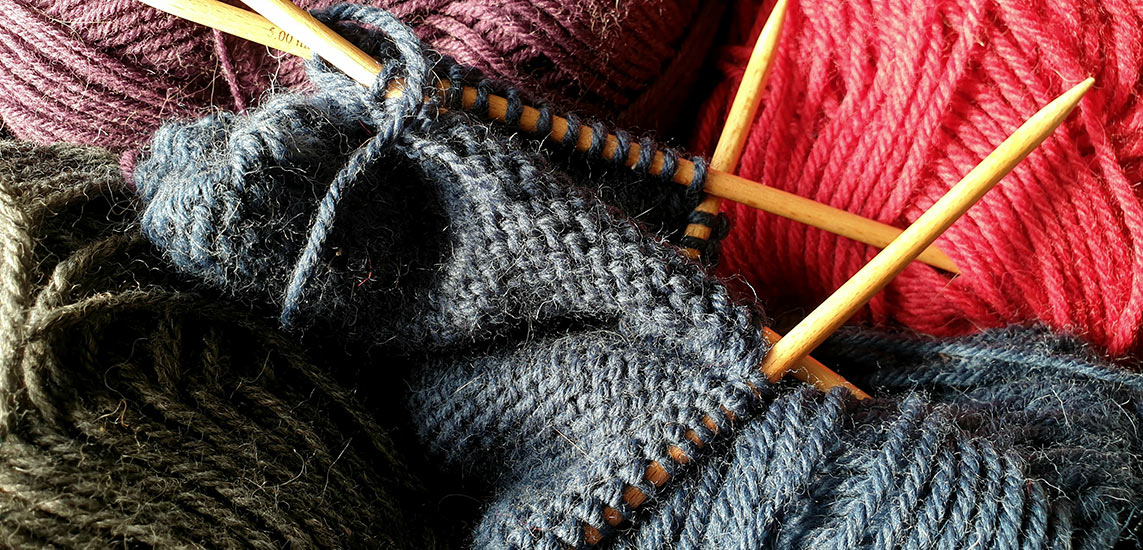With its millennia-old legacy, Wool remains a cherished textile fiber for its warmth, versatility, and tactile comfort. In the knitting community, 'knitting wool' often encompasses various fibers, but sheep's wool holds its iconic status, renowned for its warmth, lightness, and elasticity.
When wool yarn is paired with the right knitting needles, you get the superstar among all yarns. Whether knitting flat or in the round, natural wool brings unmatched perks. Our blog post dives deep into the captivating realm of knitting with wool from different animals and provides essential tips for your next woolen project.
What types of Wool are there?
Sheep wool and alpaca wool are certainly the two most common and valued yarn types among knitters. However, there are many more animals from which wool or wool-like fibers are harvested.
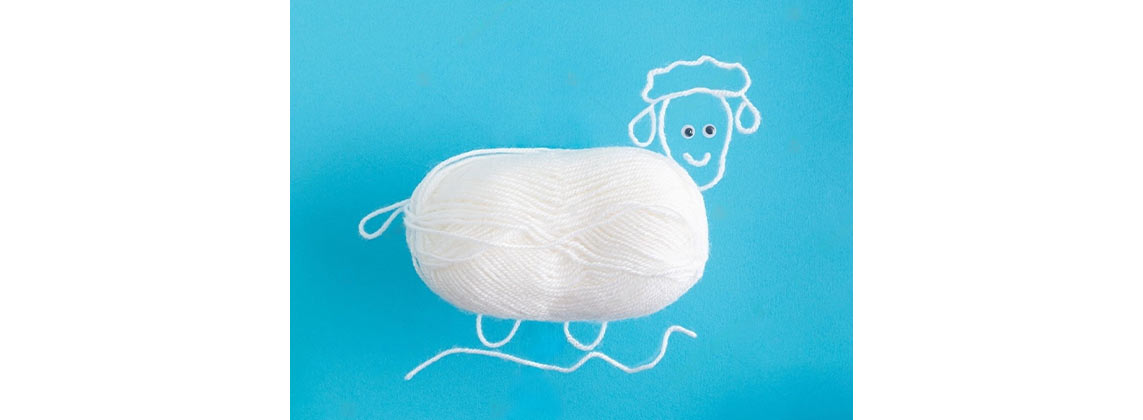
- Sheep Wool: Different breeds produce varying wool qualities, from the coarse fibers of mountain sheep to the soft and highly-prized Merino wool.
- Alpaca Wool comes from the alpaca, a domesticated species from South America. There are two breeds of alpaca: Huacaya, which produces thick, crimped wool, and Suri, known for its long, silky fibers.
- Goats: Cashmere goats produce a luxurious fiber from their soft undercoat. As it cannot be harvested like sheep wool, this type of yarn is quite pricey. The mohair fibre from Angora goats is known for its luster and sheen and is slightly less costly.
- Angora is a very soft and fluffy fiber harvested from Angora rabbits. It's often blended with other wools, adding its characteristic softness and halo to yarns.
- Camel hair makes soft and warm textiles, especially from the Bactrian camel. The fine undercoat can be spun into a luxurious yarn.
- Llamas, closely related to alpacas, produce a coarser fiber than alpacas, but it's still used for various textiles.
- One of the rarest and most expensive wools in the world comes from the vicuña, a South American animal closely related to the llama and alpaca.
- Musk Ox (Qiviut): Qiviut is the soft underhair of the musk ox. It's warmer than sheep's wool and softer than cashmere, making it very expensive.
- Yak: The undercoat of the yak, particularly from the Himalayan region, is spun into a warm, soft, and durable yarn.
From Fleece to Fibre - Wool Yarn Comes in Many Shapes
Transforming wool fleece into knittable yarn is an age-old craft that's evolved to the huge variety of wool-weight qualities we have today. But how the yarn is spun significantly influences your knitted garment’s appearance. For instance, a firmly-spun, multi-ply wool yields sharp stitches, whereas a single woolen-spun yarn or brushed wool gives a softer, more muted look.
Depending on the preparation method, we get a glossy worsted yarn or a softer woolen fibre. Post-spinning, the yarn might be plied for thickness and then finished to set an additional twist, ensuring the yarn's more excellent durability and shape.
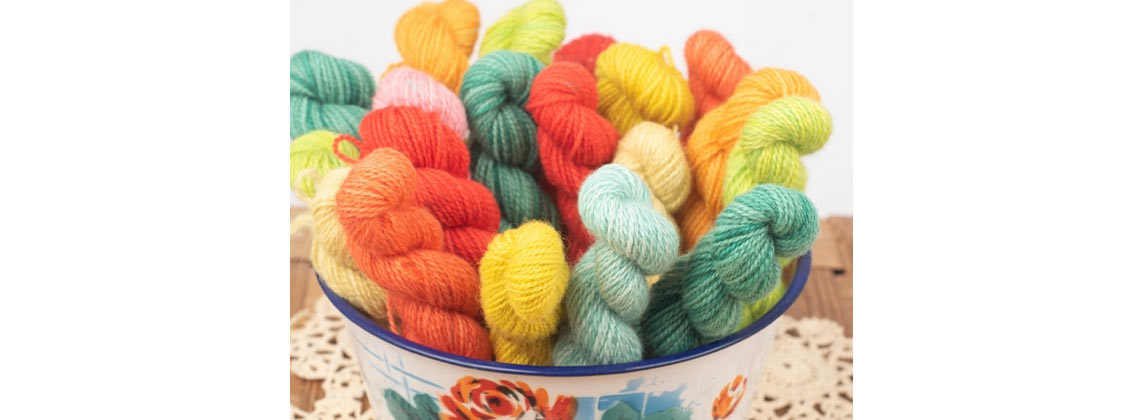
- Brushed Wool:
- Wool surface brushed with mechanical brushes.
- Produces a softer, fluffier surface with a "halo" effect.
- Traps air for added insulation and warmth.
- 2, 4, or More-ply Wool:
- "Ply" indicates the number of strands twisted together.
- 2-ply: two strands; 4-ply: four strands, etc.
- More plies generally mean stronger, possibly thicker yarn.
- Worsted Weight Wool:
- Refers to both a spinning method and yarn thickness.
- Medium-thickness yarn; versatile for various projects.
- Gauge typically 16-20 stitches over four inches.
Why is Sheep and Alpaca Wool So Popular Among Knitters?
Sheep and alpaca wool are treasured in the knitting community for their unique characteristics. Both fibers provide a natural, breathable option for garments and accessories, appealing to knitters who prioritize comfort and quality in their creations.
Sheep wool offers excellent warmth and longevity, making it versatile for many knitting projects. Merino wool is sourced from Merino sheep, known for their long, soft coats, making it ideal for skin-close items. Lambswool, obtained from a sheep's initial shearing, stands out as the coziest and most delicate fiber.
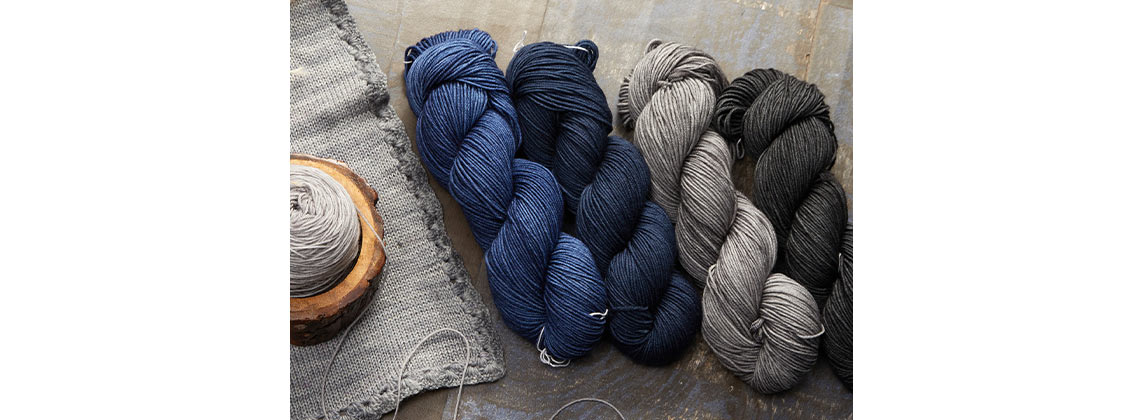
Alpaca wool, on the other hand, is celebrated for its softness, silky texture, and superior thermal properties. It possesses a natural water-repellent quality but is generally less water-repellent than sheep's wool. Sheep's wool has lanolin, a natural wax, which enhances its water-resistant properties.
- Sheep Wool:
- Provides warmth and durability.
- Offers elasticity, suitable for versatile projects.
- Natural and breathable.
- relative water resistance due to lanolin oil
- odor-repellent
- fire-resistant
- Alpaca Wool:
- Known for its softness and silky texture.
- Offers superior thermal properties.
- repels odors
- Lightweight and hypoallergenic.
- not as durable and water-resistant as sheep wool
Knitting with Wool Yarn
Wool's natural elasticity makes it a pleasure to knit with, preventing hand strain unlike non-elastic fibers, such as linen or bamboo. When working with wool yarn, consider various factors to achieve the best project results.
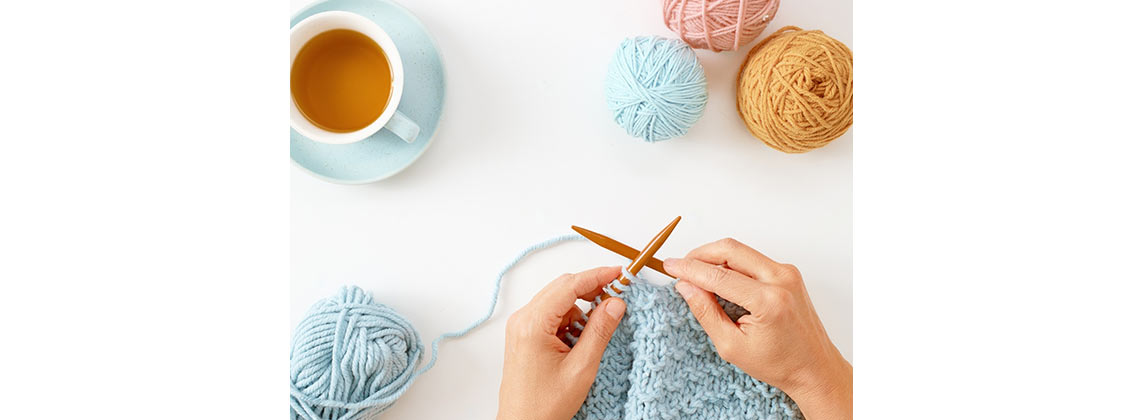
Knitting Needles: The choice of knitting needles can affect the final texture and look of the woolen item. Some knitters prefer wooden or bambooneedles for wool as they provide more grip compared to metal needles.
Shrinkage and Felting: Wool, especially untreated, can shrink and felt if washed in warm water or subjected to friction. Always follow washing and care instructions.
Stitch Definition: Different wools provide varying levels of stitch clarity. For intricate patterns, choose a wool with a good stitch definition.
Pilling: Some wool yarns can pill or produce small balls of fiber on the surface over time. Opt for high-twist yarns or those labeled as "pill-resistant".
Curling Properties: Wool, especially when knitting in stockinette stitch, has a natural tendency to curl at the edges, which can be a challenge when creating flat projects on straight knitting needles. By adding ribbing stitches or a garter stitch border around your project, you can help counteract the curl. For more tips on how to get neat edges, see our guide here.
Caring for your Wool Yarn Projects
Wool knits require gentle care to retain their beauty. A common misconception is the need for frequent washing. In truth, unless labeled as machine-washable (superwash quality wool), wool yarn should always be hand-washed.
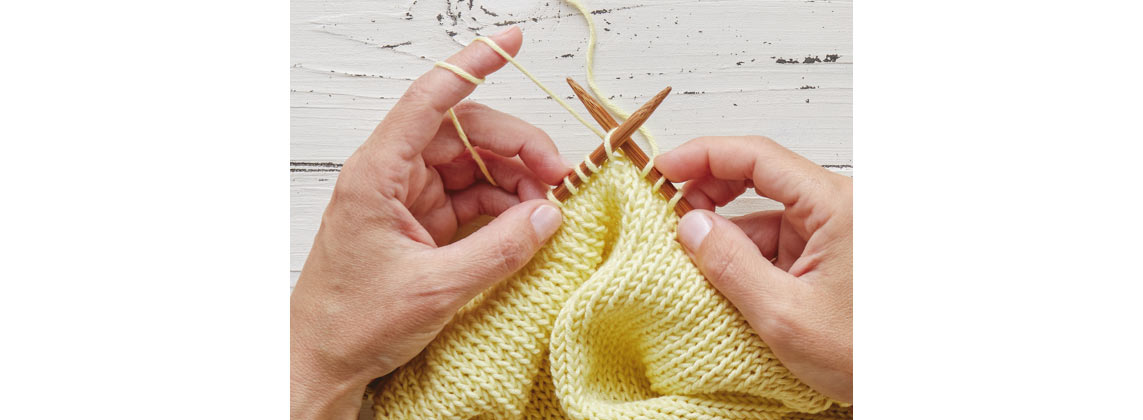
- Washing:
- Hand wash in cool to lukewarm water with mild detergent.
- Soak for a few minutes, carefully addressing stains.
- Gently squeeze out water without wringing and use a towel to absorb excess moisture.
- Refreshing:
- Use a hand-held garment steamer or a medium-set clothes iron for steaming.
- Ensure the iron doesn't touch the garment.
- Storage:
- Wool naturally repels odors; washing after every use isn't necessary.
- Wash mid-winter and before long-term storage.
- Store clean to deter moths, either in bags or use a moth-repellent.
- Blocking enhances the appearance and ensures correct measurements.
- Wet-blocking: Shape wet garment on a dry surface, pin if necessary.
- Spray-blocking: Pin garment to dimensions on a mat, then mist until damp and let dry.
It's hard to find a fiber that rivals wool yarn when it comes to knitting warm and durable projects, as it seamlessly combines heritage and adaptability. Top your experience by choosing the best knitting needles for your next woolen project. In KnitPro’s extensive collection, you will find knitting tools and accessories that have been designed and crafted to meet every knitter’s taste and knitting technique.


